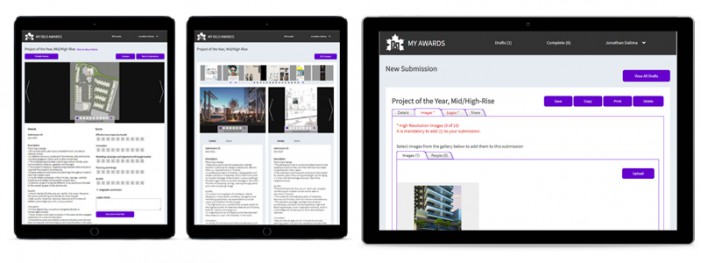In this article, we’re continuing our series on digital transformation. We’ve been exploring how various industries have been leveraging the power of digital innovation to reinvent their processes and stay relevant in the digital age. Next up: professional associations.
Professional associations face a number of challenges: their tried-and-true membership-based model has to compete with increasingly accessible social media platforms; they have rich datasets, but it can be hard to know what to do with it, and their members are starting to demand a thoroughly digital experience.
What’s a professional association to do? In many cases, the answer is (relatively) simple: embrace digital transformation. In this post, we’ll cover five ways professional associations are embracing digital transformation processes and shaking up the way they interact with their members.
1. Transposing Manual Processes Online
 From member applications and renewals to surveys and awards, professional associations produce and pass along a variety of different documents. For most associations, this means a lot of paper, a lot of space to store it, and organizational guidelines to keep track of it all and ensure nothing slips through the cracks when being shuffled from one department to another.
From member applications and renewals to surveys and awards, professional associations produce and pass along a variety of different documents. For most associations, this means a lot of paper, a lot of space to store it, and organizational guidelines to keep track of it all and ensure nothing slips through the cracks when being shuffled from one department to another.
By leveraging digital transformation processes, many associations are foregoing their traditional paper documents and instead transposing those manual processes online. Now, everything from membership application and renewals to annual awards applications can be done through standalone digital forms, with all of the review and approval processes done through an online system — potentially integrated into the same CMS as the organization's website.
We did just this for the annual awards held by the Building Industry and Land Development Association (BILD). We customized BILD's CMS so members could submit applications for a BILD Award and manage their application, including uploading all supplemental materials, through a single interface. It offered members a completely self-serve online system, while eliminating heaps of paper waste and removing the potential for human error, and freeing up BILD staff's time.
Eliminating paper-based processes is one of the key digital transformation processes associations are taking advantage of, and with good reason — it delivers on member satisfaction and organizational efficiency.
2. Digitally transformed conference experiences
 Nearly every professional association out there puts on a big conference or annual meeting for its members. And nearly every conference or meeting could use some digital assistance, whether it’s from an app, a revamped attendee management system, or incorporating digital experiences into conference sessions.
Nearly every professional association out there puts on a big conference or annual meeting for its members. And nearly every conference or meeting could use some digital assistance, whether it’s from an app, a revamped attendee management system, or incorporating digital experiences into conference sessions.
Take the International Association of Movers’ app. Before pushing out the app, IAM produced a hefty 2-pound annual meeting guide for its conference attendees. The meeting guide was not only bulky and cumbersome for the association’s members to lug around—it was also expensive to produce. And because of lag time between printing and conference, it was out of date by the time the conference came around. IAM transformed their printed event guide into an app that receives real-time updates, and that attendees can easily download to their phone on-site.
Other associations have embraced digital innovation in conference planning. The National Association of College and University Business Officers (NACUBO) has taken a seamlessly integrated, digital approach to attendee management for its annual meetings. Their system ties registration, badge printing, and CEU tracking into a streamlined digital experience for its members.
Conferences are one of the most valuable offerings for a professional association—and digital transformation can go a long way to adding to that value and providing a better member experience at these events.
3. Customized content
Members of professional associations all have one thing in common: their professional activities or occupation. But beyond that, association members tend to have unique interest and needs, in terms of the type (and amount) of content they’re keen to engage with.
That’s where customization comes in. Tailoring your content—and keeping it short and snappy—can give engagement a serious boost. And digital transformation can help you out here.
The American Academy of Otolaryngology (AAOH-HNS/F) took an interesting approach to this problem. Faced with a list of 15 different newsletters, each delivered separately, it embraced a touch of digital innovation and member personalization. The associations’ management cut those 15 different email blasts down to a single, customized email for each member. That way, members get only the content they want and need—without having to wade through endless emails and newsletters.
4. Multiple channels for member engagement
 While personalized newsletters and email blasts are great, going beyond these channels of communication is also proving to be a popular frontier for digital transformation in professional associations.
We’re talking about more than haphazardly updating a Facebook feed and pushing a few tweets out into the Twitter-sphere, though. In our first digital transformation post, we talked about the importance of embracing digital strategy at a fundamental, organization level, rather than simply as a way to keep up with the latest trends and buzz—and that principle definitely applies here.
While personalized newsletters and email blasts are great, going beyond these channels of communication is also proving to be a popular frontier for digital transformation in professional associations.
We’re talking about more than haphazardly updating a Facebook feed and pushing a few tweets out into the Twitter-sphere, though. In our first digital transformation post, we talked about the importance of embracing digital strategy at a fundamental, organization level, rather than simply as a way to keep up with the latest trends and buzz—and that principle definitely applies here.
Digital transformation presents an opportunity to fundamentally change how professional associations interact with their members. While things like social media won’t replace annual conferences or newsletters, they can supplement them. For example, association members often use social media to plan their conference activities, set meeting agendas, and network. The sooner professional associations get involved in this, the better!
Plus, for professional associations struggling to attract younger members, embracing a diverse set of communication channels is a popular and effective digital strategy.
5. Data-driven transformation

Most professional associations collect (or have access to) a ton of data. But it can be tricky to know what to do with it, and how to use it effectively as part of a digital transformation strategy. We’ve got some suggestions:
- Personalization. Personalization might just be the name-of-the-game for digital transformation in professional associations. Data can prove super helpful here: using analytics and member data, professional associations can customize content, provide personal experiences for members. An example of personalization here might involve detecting your website visitors’ interests and catering to them by presenting relevant content. For example, if a visitor lands on your site from New York City, your CMS can adapt to them, prioritizing information on East Coast conferences and events.
- Digital marketing optimization. While your association might not be heavily invested in the marketing game, it’s important to remember that association members are customers like anyone else. Your data and analytics can help you improve how you reach out to them.
- Data-driven design. We’re big believers in the power of data-driven design to improve websites—and a healthy, engaging website is fundamental to an effective digital strategy for professional associations.
Wrap Up
Professional associations can reap the rewards of digital innovation, especially when it comes to engaging with their members. In this post, we’ve covered four of the key ways that digital strategy can shake up the way professional associations do business.
